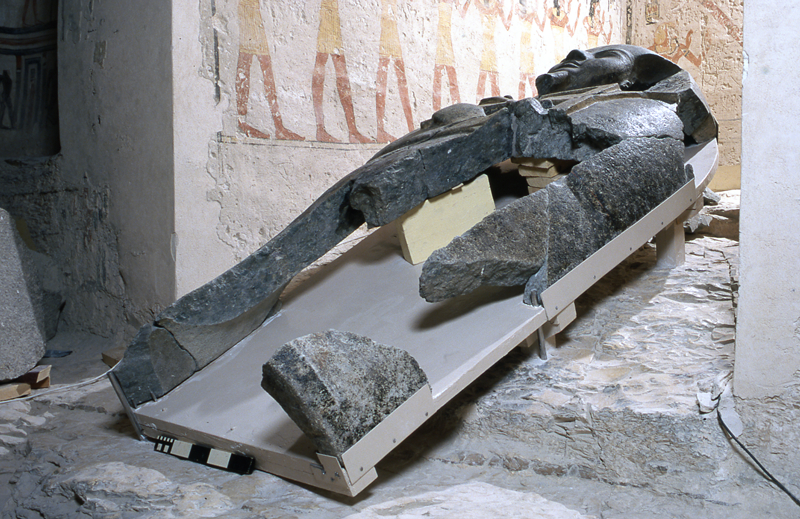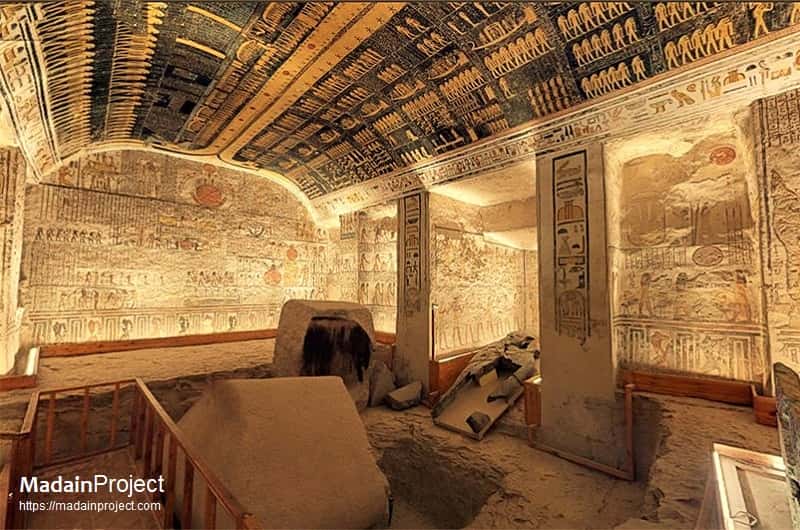
The Ramesses VI’s mummiform stone sarcophagus was found in numerous pieces. Substantial parts of the lower sections of Ramesses VI’s sarcophagus still lie in his burial chamber, and the face (inspect) of which is now in the British Museum.

The sarcophagus of Ramesses VI, shattered in antiquity, was reconstructed in 2003 CE from the framents found in the king’s tomb and else where in the Valley of the Kings. The stone is hard green conglomerate, quarried in the Wadi Hammamat, about a hundred kilometers from Luxor in the Eastern Desert.

The sarcophagus, orginally painted blue, red, yellow and black is stained by ointments used in the burial ritual. Carved decoration tells the story of the king’s afterlife through symbolism connecting him with the sun god Ra and Osiris. The face on the lid is a replica of the original, which has been in the British Museum since 1823 CE.

This sarcophagus was placed inside a granite box, of which two huge fragments remain in the burial chamber. The mummified body of Ramesses VI was found in the nearby tomb of Amenhotep II in 1898 CE and now rests in the Egyptian Museum, Cairo.